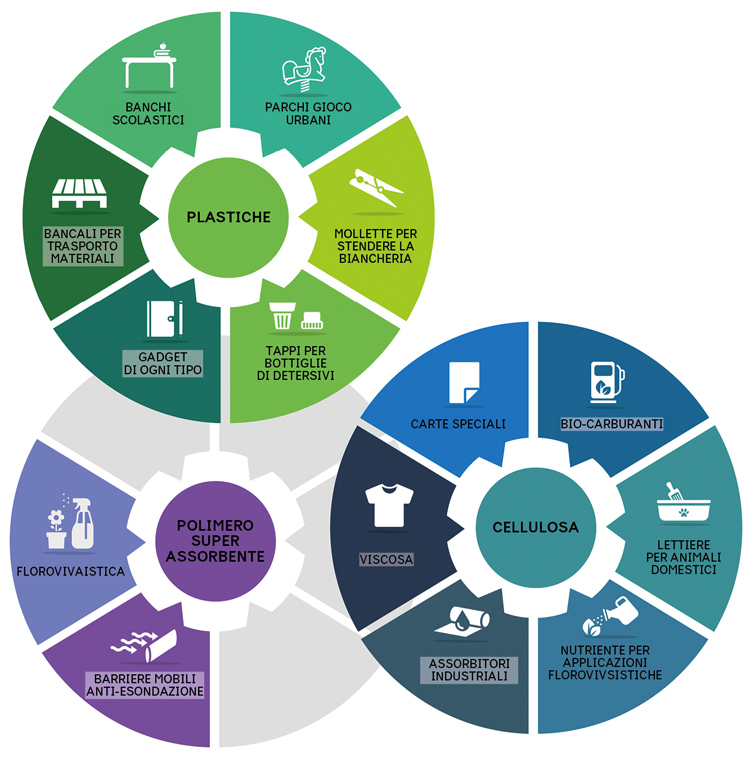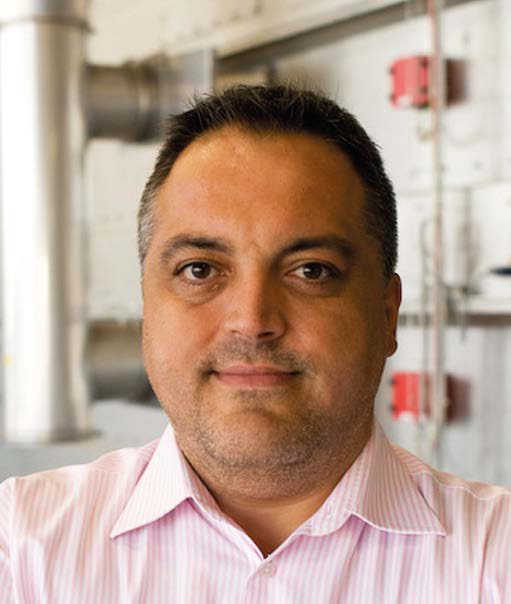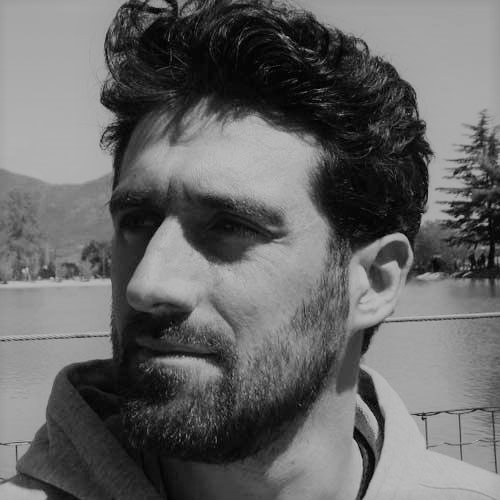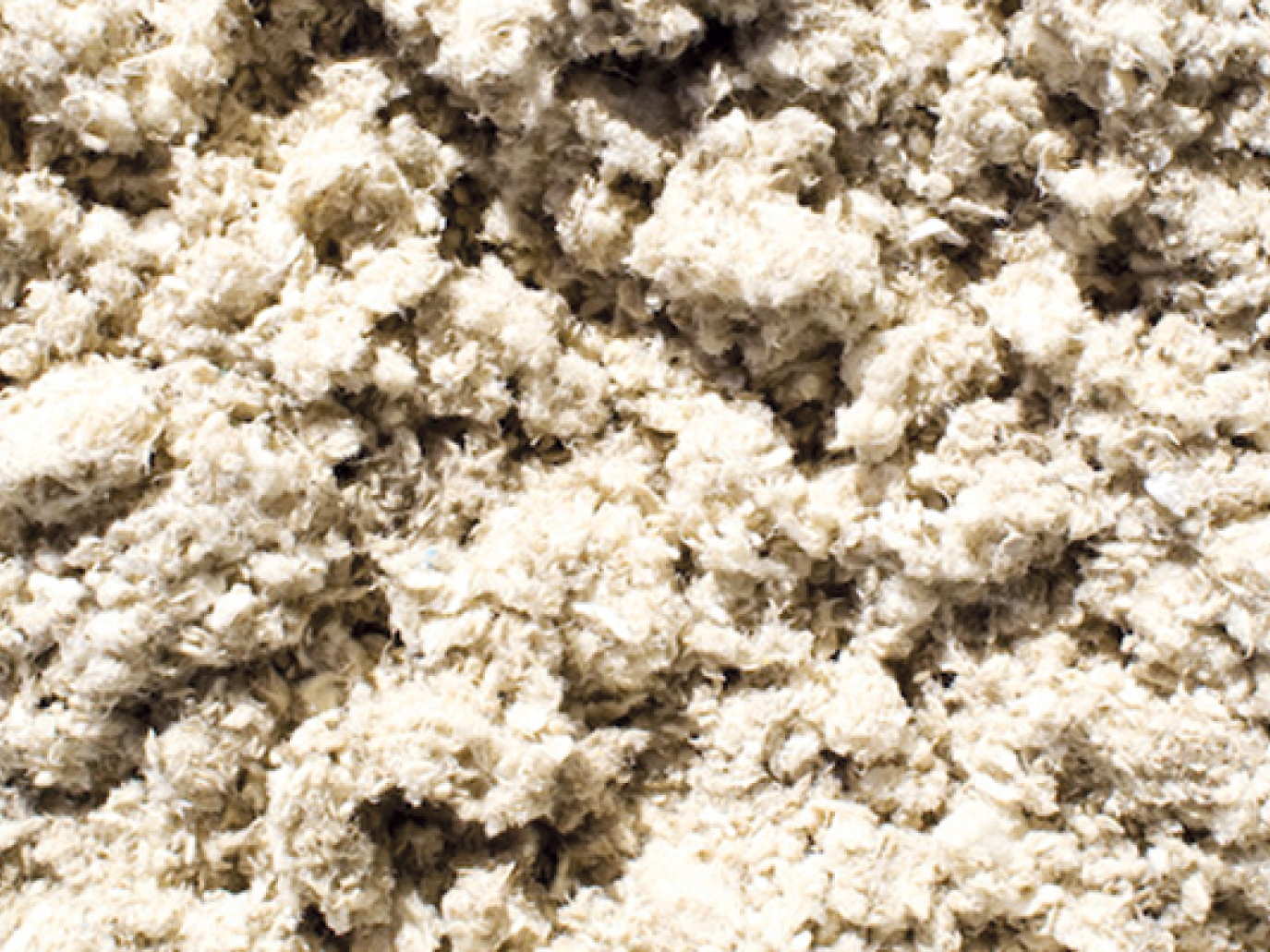It is the first technology able to 100% recycle materials making up nappies and absorbent products. A plant built from scratch in Lovadina di Spresiano (Treviso), which transforms otherwise landfilled waste into new secondary raw materials: plastic, cellulose and a super absorbing polymer, ready to get back into the production cycle.
The system has been developed by Fater SPA, an Italian company born out of a joint venture between Procter & Gamble and Gruppo Angelini and implemented within the Contarina SPA production site, a company dealing with waste collection in the 50 municipalities belonging to the Priula Catchment, in the Treviso province. “Thanks to the partnership established with Fater, we took part in the experimentation of what is the world’s first plant for recycling used absorbent products,” stated Franco Zanata, Contarina SPA’s chairman. “From this collaboration, a new technology was born, representing a fundamental step forward in the challenge we took to recycle the non recyclable, turning what was waste into a resource.”

The currently operational plant is the result of 10 years of research and development, starting from the first trial in 2008. The technology is based on the use of steam and pressure to sterilize and mechanically separate nappies’ components, following a series of steps.
After the initial prototype, in 2015 Fater developed the first pilot plant to understand the feasibility of the project on an industrial scale with the Lovadina plant that the Lovadina plant that at full capacity will be able to treat 10,000 tonnes of nappies and absorbent products per year (during the test phase the machinery processed about 1,500 kg of waste per year). According to Fater’s estimates, from 1 tonne of separate waste, 300 kg of dry materials can be obtained which, once treated, are transformed into 150 kg of cellulose, 75 kg of plastic and 75 kg of super absorbing polymer. In turn, these materials can find new applications: out of cellulose, new absorbing materials for pets can be manufactured, recycled paper and, in the not too distant future, packaging. Plastic, instead, can be used in various processing cycles, with a bonus: pastel colours characterizing nappies; as for the polymer, it can be reused to make new absorbent products. In environmental terms, the plant will avoid landfilling 13 cubic metres of waste, thus reducing 3,000 tonnes of CO2 emissions per year.
Contarina SPA, European excellence
An entirely publicly-owned company, operational since 1989, carrying out the service of waste collection in 50 municipalities in the Treviso province, belonging to the Priula Council Catchment: it serves about 554,000 inhabitants over a surface of 1,300 square kilometres. The company reached over 85% of separate waste collection with a tariff well below national average with an aim to achieve 96.7% by 2022. Thanks to €60 million invested in raising awareness, education, research and development projects, Contarina SPA upgraded its structures, industrial composting and selection plants of recyclable waste. It is also shifting its own vehicle fleet towards a low-impact haulage system and gas, hybrid and electric engines.
Steam and pressure
Used nappies collection work within the already tried and tested door-to-door method managed by Contarina SPA. Private homes as well as public structures such as hospitals, nurseries, kindergartens and elderly homes can apply for a dedicated container. It is a catchment area made up of 220,000 users, equalling 500,000 people. Waste thus collected reaches the Contarina SPA-managed plant where it is processed to be reused. Here, the main phase is represented by waste sanitisation, via steam and mechanical movement within an autoclave. This is the core process, a phase lasting about 45 minutes, during which the organic component of nappies is eliminated. Then, during three additional distinct steps, secondary raw materials are further separated: thanks to infrared processing, polymers are separated from cellulose and then divided into plastic and absorbing polymers. The whole procedure takes place without chemical processes or combustion. According to data offered within the RECALL European project, every year, in Italy, over 900,000 tonnes of nappies and absorbent products are landfilled or incinerated, 8.5 million in Europe and up to 30 million tonnes worldwide. Millions of tonnes of secondary raw materials that hopefully in the near future will be recovered, in keeping with the circular economy.
Info

Interview with Marcello Somma, AHP-Recycling BU’s Associate Director
by R. B.
“A biorefinery will be our next step forward”
Does a plant of this kind make sense in the case of advanced separate waste collection? Can such technology provide the required impetus to further improve collection percentages?
“Absolutely. The stronger separate waste collection is, the greater significance for the nappy recycling plants. Where percentages of separate waste collection are higher than 70-80%, absorbent products (nappies and incontinence pads) represent up to 20-25% of mixed waste residue that is then disposed of. In such contexts, precisely to improve strong separate waste collection, frequencies of waste collection are reduced to no less than once a week and at the moment there are many instances with lower frequencies, up to only once a month. Many municipalities (over 700 in Italy, for a whole population of 11 million inhabitants), even if waste cannot be recycled, are already introducing dedicated separate waste collection facilities for this specific type of waste in order to offer citizens a service for something they would struggle to keep in the home for long periods. The introduction of a recycling plant for nappies in such contexts promotes not only an improvement of separate waste collection percentages, but first and foremost better recycling rates and valorisation of precious materials contained in post-consumer nappies and incontinence pads.”
With such a project, is it possible to accommodate citizens’ needs and reduce tariffs?
“Thanks to the recovery of high-quality secondary raw materials, recycling post-consumer nappies and incontinence pads can lead to a reduction of the treatment cost up to 35% compared to the cost of landfilling or incinerating waste residue. This translates into a saving for municipalities on the overall cost of managing urban waste and therefore potential reduction of waste tariffs for citizens. Moreover, nappies and incontinence pad separate waste collection takes away volume and total weight from the residual fractions of single families on which citizens pay tax to municipalities with a regular tariff system.”
A circular economy implies using recovered materials. Is there already a market? Are they economically sustainable?
“Of course. Please note that from a tonne of recycled used nappies, almost 75 kg of plastics, over 150 kg of cellulosic-organic matter and 75 kg of super absorbing polymer are obtained. Of the three materials recovered in the recycling process, two (cellulose and plastic) are sent to already existing markets and can be used in several applications with already many customers. As for the super absorbing polymer, even though currently there is no post-consumer market, we pinpointed some potential industrial applications that currently use virgin polymers. In any event, our secondary raw materials are generally of a better quality compared to the equivalent recycled materials. That justifies a valorisation in the making of higher added value products and strengthens economic sustainability of the project as a whole.”
What are the developments of such technology?
“The recycling technology of nappies and incontinence pads has already reached industrial scale and our research activities are now focused on pinpointing high-added value applications for secondary raw materials obtained from the recycling process. Particular attention is being paid to the valorisation of the cellulosic-organic fraction, by setting up biorefining processes for its transformation into biopolymers and fertilizers. Here, we were supported by the European Commission and BBI (Bio-Based Industries public-private partnership) which funded an important innovation project called EMBRACED (H2020-BBI-JTI-2016 – Grant Agreement n. 745746), which we lead, and that is developing this research activity with the creation of a first demonstration biorefinery plant in Amsterdam.”



